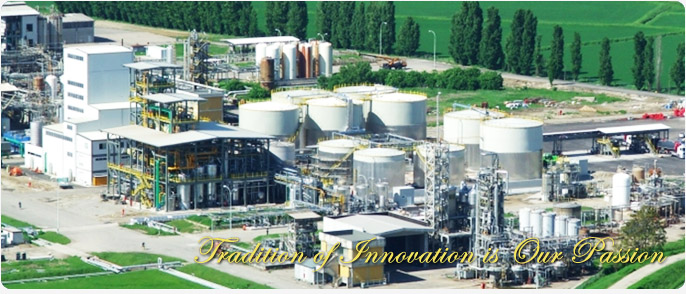








Inovasi metodologi analisis dan sintesis sistem industri
5 January 2011
 Pengantar
Pengantar
Analisis thermodinamika mempunyai peran yang sangat penting untuk mengevaluasi pemakaian energi dalam sistem yang ada di industri. Sampai saat ini hukum thermodinamika 1 dipakai sebagai dasar analisis untuk menjelaskan aliran energi dalam suatu sistem. Analisis tersebut akan membantu mengidentifikasi variabel operasi dan efek yang ditimbulkan terhadap efisiensi pemakaian energi. Ada satu kelemahan dari analisis tersebut, yaitu informasi yang dihasilkan tidak dapat menunjukkan letak pemborosan energi maupun petunjuk yang akan menuju ke arah perbaikan dari sisi thermodinamika. Dari kenyataan tersebut timbul konsep analisis eksergi (exergy analysis) yang menggunakan kombinasi hukum thermodinamika 1 dan 2 sebagai dasar analisis. Dari analisis eksergi akan dapat ditentukan area dan alasan kehilangan eksergi (exergy loss) sekaligus akan dapat ditentukan besarnya kehilangan eksergi. Eksergi sendiri dapat didefinisikan sebagai kerja maksimum dari suatu proses reversible yang merubah satu unit massa bahan dari kondisi tertentu ke keadaan keseimbangan dengan lingkungan.
Analisis thermodinamika secara grafis
Analisis thermodinamika secara grafis adalah tools yang sangat baik untuk melakukan analisis termodinamika untuk suatu unit operasi maupun sistem yang ada di industri. Dengan menggunakan teknik ini, para engineer dapat segera menemukan penyebab inefisiensi dan menganalisis untuk mempelajari karakteristik penting dan selanjutnya akan dapat diambil tindakan melakukan remediasi dalamrangka menaikkan efisiensi.
a. Heat availability diagram
Umeda, Niida, dan Shiroko (1979) telah mengusulkan heat availability diagram, yang menggambarkan beban panas Q pada sumbu-x dan efisiensi Carnot 1-T0/T pada sumbu-y. Karena heat source nilainya lebih besar dari heat sink, maka grafik heat source tergambar di atas heat sink dan area tertutup antara kedua grafik tersebut menunjukkan heat loss dari system yang ditinjau. Perlu dicatat bahwa minimasi heat loss dilakukan dengan minimasi area tersebut.
b. Pinch analysis
Pada awal 1980-an, Prof Bodo Linhoff dkk memperkenalkan pinch teknology sebagai alat untuk mengevaluasi perancangan sistem (Linhoff, 1984). Metodologi ini, kemudian dikenal sebagai pinch analisis yang menggunakan column grand composite curve (CGCC), yang digambarkan dari defisit entalpi pada sumbu x dan suhu pada pada sumbu y (Dhole dan Linnhoff, 1993 ).
Untuk lebh memberikan informs yang komprehensih, ordinat dari CGCC diubah menjadi efisiensi Carnot, sebagai ganti suhu untuk melakukan energy dan exergy analysis (Dhole dan Zheng, 1995). Grafik yang dihasilkan disebut Exergy Grand Composite Curve dan memiliki konteks sistem yang lebih umum seperti sistem pendinginan, close-siklus sistem turbin gas, dll. Analisis ini merupakan cara yang sederhana untuk menganalisis physical processes, akan tetapi tidak dapat memberikan informasi terkait dengan proses kimia, seperti pada reactive distillation.
c. Energy-utilization diagram (EUD)
Untuk memberikan informasi yang lebih rinci proses terkait physical processes maupun proses kimia, Ishida dkk pada tahun 1983 memperkenalakan EUD (energy utilization diagram). Konsep dasar dari metodologi ini adalah hukum kedua termodinamika yang berkaitan dengan exergy. Dengan menggunakan metodologi ini, berbagai jenis exergy loss, seperti exergy loss karena kondensasi, evaporasi, pencampuran, pemanasan, pendinginan dan sebagainya dapat digambar secara grafis dengan detail. Ada satu kekurangan analisis dengan EUD, yaitu saat unit operasi, misal distilasi, jumlah plate-nya terlalu banyak tidak akan tergambar dengan sempurna
d. Integrated Energy-utilization diagram (IEUD)
Untuk mengatasi kelemahan EUD, Budiman dan Ishida (1996) di Journal of Chemical Engineering of Japan memperkenalkan satu metoda yang dikenal dengan IEUD (integrated energy-utilization diagram). IEUD merupakan grafis tiga dimensi dimana sumbu x menunjukkan kuantitas energi (DH), sumbu y adalah energy level (A) yang menunjukkan kualitas energi dan sumbu z menunjukkan jumlah plate didalam menara distilasi. Volume yang ada di IEUD menunjukkan exergy loss.
e. Material-utilization diagram (EUD)
 Pada tahun 2004 di International Journal of Energy, Budiman dan Ishida memperkenalkan suatu metoda baru yang menyempurnakan metoda-metoda sebelumnya dan diberi nama MUD (material utilization diagram). Pada MUD adalah suatu tool yang biasa dipakai untuk menganalisis menara distilasi atau unit operasi yang lain berdasarkan pengembangan hukum thermodinamika 1 dan 2 yang terkait dengan konsep exergy. Diagram ini mempunyai sumbu x yang berupa kecepatan gas maupun cair (n, mol/s) dan fraksi mol gas maupun cairan (ln x pada sisi kiri dan ln y pada sisi kanan).
Pada tahun 2004 di International Journal of Energy, Budiman dan Ishida memperkenalkan suatu metoda baru yang menyempurnakan metoda-metoda sebelumnya dan diberi nama MUD (material utilization diagram). Pada MUD adalah suatu tool yang biasa dipakai untuk menganalisis menara distilasi atau unit operasi yang lain berdasarkan pengembangan hukum thermodinamika 1 dan 2 yang terkait dengan konsep exergy. Diagram ini mempunyai sumbu x yang berupa kecepatan gas maupun cair (n, mol/s) dan fraksi mol gas maupun cairan (ln x pada sisi kiri dan ln y pada sisi kanan).
Banyak sekali informasi yang diberikan oleh MUD, tidak hanya dari sisi kualitas dan kuantitas eksergi akan tetapi juga dari sisi kuantitas bahas (kecepatan bahan). Informasi yang bisa didapat dari MUD meliputi: exergy loss dan exergy gain dari sub proses (pencampuran, pemanasan, pendinginan, evaporasi dan kondensasi) di setiap plate/tempat.





